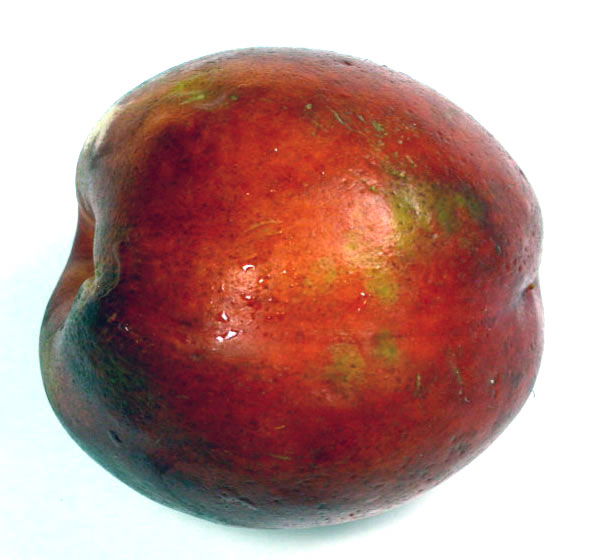Whether you are inspecting nectarines from Chile, California, or the East Coast, you may run into some varying degrees of surface discoloration. Somewhere along the chain, the nectarines were subject to some rough handling, that injured the cells of the skin, leading to oxidation, or discoloring of the skin.

This surface discoloration may appear light brown in color, or in advanced stages appear dark brown or even black. The discolored area may feel smooth, but in some cases the discolored areas will begin to sink. If you carefully cut below the surface you will see that the flesh is rarely affected. Because the discoloration is considered to be a condition defect, the discolored area will become larger in area, may become darker in color, and the discolored area may develop into sunken areas. Do not confuse this with decay. This skin is only discolored, it is not soft and mushy. I have never seen decay develop from the discolored areas.
The USDA Inspection Instructions and Standards do not address this common defect. There is no official scoring guideline. But using scoring guidelines for similar defects, we do have some basis to follow. If the discoloration was due to heat injury, sprayburn or sunburn the USDA Standard states to score the nectarine as a defect whenever the normal color of the skin has materially changed…..meaning it should be scored on site. That seems to be to strict of a scoring guideline. If scars are found, the USDA Standard allows for up to 5/8 inch in area for a fairly light colored, smooth scar. If the scar is dark in color, the standard allows for a smaller area, 3/8 inch. The guideline for scars seems reasonable, meaning if you encounter surface discoloration, as shown in the image above, it would be scored as a defect, exceeding the 3/8 inch area allowed for a dark colored scar.

2 Comments on “Nectarines- Surface Discoloration”
Hello Tyawman, do you know why is produced this descoloration?
we have this problem in spanish nectarines.
Best Regards
Antonio, thanks for your question. Usually the discoloration is caused by some kind of abrasion, such as rolling on conveyor belts during packing or movement of the fruit against the containers during shipment.